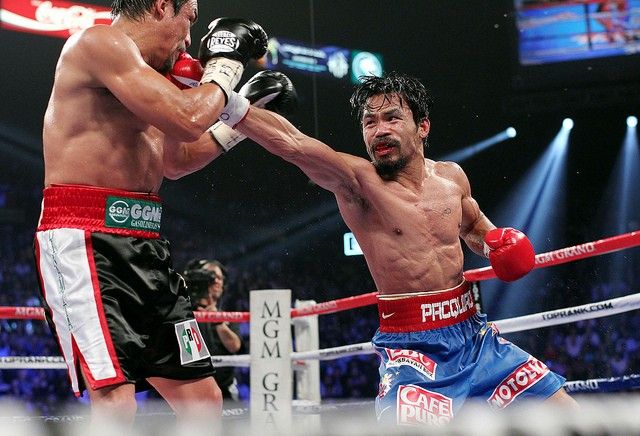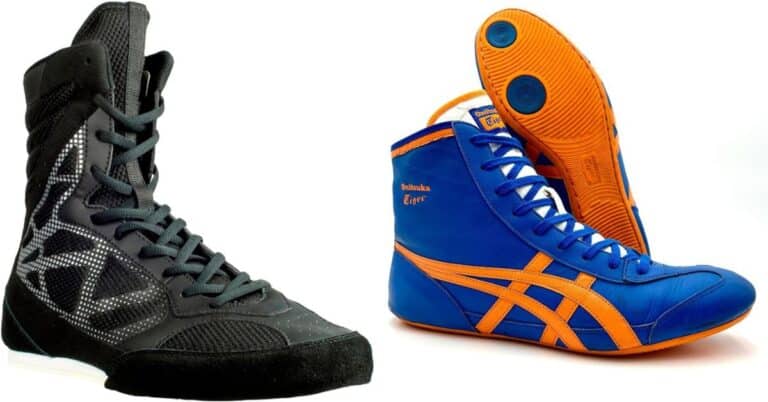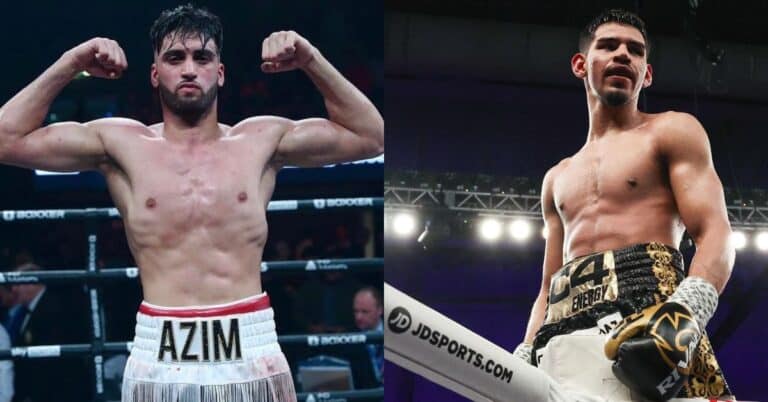Types of Punches

There are a wide variety of punches used within boxing and other combat sports. If you’re going to learn boxing or any other striking martial arts, you must know the different types of punches.
Here is a list of all the types of punches that you must know. Read below to learn how to throw all of these types of punches.
What is a Punch?
Before we get into all of the different types of punches. The most basic definition of the punch is a physical strike delivered with a closed fist.
Throwing a punch is the act of propelling a fist toward a target with force and speed in order to inflict damage. Punches are commonly used within combat sports like boxing and various martial arts.
These strikes can vary from their speed, power, angle, and the range they’re thrown from. Proper technique in delivering a punch involves coordination of the whole body moving in unison.
Everything includes footwork, hip rotation, shoulder movement, and turning your fist to maximize the impact and effectiveness.
Common Types of Punches
Out of all of the different types of punches, there are four that are the most common among them.
- Jabs
- Crosses/Straights
- Hooks
- Uppercuts
These four basic punches were perfected within punching and are used within the most effective striking martial arts.
Jabs

Jabs are arguably the most important among the different types of punches that you should learn first. A jab is a straight punch delivered with your lead hand which is used for a variety of purposes.
Some of ways that a jab is used include:
- Find The Range
- Set Up Combinations
- Break Opponent’s Rhythm
- Land Points
To throw a proper jab, your lead foot steps forward as your lead arm extends as your fist slightly turns inward. If you are able to develop a great jab, you can win fights solely by using this punch.
Crosses/Straight
The cross or straight is one of the most powerful types of punches where you use your backhand. This punch is called a cross by many, because your arm crosses over your body. Others call the punch a straight because it is thrown in a straight line.
A cross/straight is a power punch aimed to target both the head and body. To throw a proper cross, your hips, feet, and shoulder turn in unison as your fist comes off your chin.
When your fist goes to the target, your knuckles turn slightly inward as you aim to hit with your front knuckles.
As you practice throwing a straight, remember these two important tips:
- Punch Through Your Target
- Bring Hand Back To Your Head
Always aim to punch through your target to get the maximum amount of power from your punch. Then after throwing your strike, bring your hand back to your head to protect yourself from counters.
Hooks
Hooks are other types of punches typically thrown as a power strike. A hook punch is a semi-circular punch that can be thrown with both hands targeting the head and body.
When a boxer throws their hook punches, they generally throw them two different ways. They will either throw their hooks with their knuckles vertically or horizontally depending on how their opponent is defending.
To throw a proper hook punch, your feet and body turn slightly to the outside as your punch crosses your body. Be sure to stay tight, not over-extend your body, and as always, bring your hand back up.
Uppercuts

Just like with the hooks, uppercuts are the other main types of punches used to land with power. An uppercut is a vertical punch thrown upward to the head or body and is thrown with both hands.
Uppercuts are commonly used to attack from below when an opponent has tight guards protecting the sides of their head.
When you throw uppercuts, your body subtly dips down to get an angle and your fist is thrown from your chin. Be sure to remember not to exaggerate your dip and stay tight when you throw your uppercut.
Also, don’t make the common mistake of making a circular looping motion when throwing your uppercut. Doing this decreases your power and leaves you exposed to counters.
Advanced/Specialized Types of Punches
After the basic four types of punches used in boxing, there are other advanced or specialized punches that are used. Here are some of the other advanced or specialized punches that you might see boxers use.
- Overhand
- Vertical Punch
- Shovel Hook
- Bolo Punch
- Check Hook
- Gazelle Punch
- Corkscrew Punch
- Flicker Jab
- Rabbit Punch
Overhand
The overhand punch is a power punch thrown with the back or rear hand. This power strike looks similar to a cross, but is thrown in a looping motion instead of straight at the target.
The reason why an overhand is thrown in a looping motion is to go over an opponent’s guards. Overhand punchers are a favorite of power punchers and are commonly used to take out their opponents.
In this era, Deontay Wilder is notorious for having a deadly overhand right.
Vertical Punch
Vertical punches are types of straight punches that are thrown without turning your knuckles. This type of specialty punch is often used whenever an opponent is holding tight guard to defend hooks and overhands.
When they over defend hooks and overhand punches, this leaves their centerline open for a vertical strike. A fighter can throw both vertical jabs and straights targeting their opponent’s face and body.
Shovel Hook
A shovel hook is a combination of a hook and uppercut blended together. Shovel hooks look similar to both punches, but are thrown at an angle between how hooks and uppercuts are typically thrown.
This type of punch is thrown from around a 45 degree angle and can be thrown with both hands. You should definitely consider adding this great punch to your arsenal.
Bolo Punch
The bolo punch is a specialized punch that starts with a circular motion but ends with a straight or slightly-curved path. A bolo punch’s semi-circle movement is used as a distraction.
This semi-circle movement gets the opponent to react, but the punch redirects at the last second. It’s a great punch to learn, but takes hours of practice to get down.
Check Hook
A check hook is a type of hook often used as a counter punch. This counter is often used whenever an opponent is aggressively moving forward.
The punch is thrown off a backstep, pivot, or both as the opponent is moving forward. If you’re a counter puncher, you should definitely take time to learn the check hook.
Gazelle Punch

A gazelle punch is a type of punch where a boxer leaps forward to land a powerful strike. Gazelle punches are either powerful hooks or uppercuts used by aggressive fighters.
One of the legendary fighters who was known for using a gazelle punch was boxing GOAT Roy Jones Jr.
Corkscrew Punch
A corkscrew punch is a punch, where the fist over-rotates, which looks similar to the motion of a corkscrew. This corkscrew motion is to increase the penetration and impact.
Just like with a vertical punch, corkscrew punches can be used when opponents have tight defensive guards.
Flicker Jab
The flicker jab is a variation of a jab that was famously used by boxing legend Thomas Hearns. Contrary to a traditional jab that is thrown from the head, flicker jabs are thrown from a lower angle.
Also instead of a traditional snap with a normal jab, flicker jabs are thrown in a flicking motion. This constant attacking offsets an opponent’s rhythm and makes it hard for them to get in and trade strikes.
Rabbit Punch
A Rabbit punch is a highly illegal type of punch that targets the back of an opponent’s head. These type of punches are illegal in all combat sports and should never be used.
Other Punching Techniques Outside of Boxing
Outside of boxing, there are other types of punches used within types of kickboxing and MMA. Here are some of the most common types of punches used outside of boxing.
- Backfist
- Hammerfist
- Superman Punch
- One-Inch Punch
- Wing Chun Double Punch
- Sambo Casting Punch
- One Knuckle Punch
Backfist
The backfist is a type of strike used in other striking martial arts outside of boxing. When traditional backfists are thrown, you aim to hit your opponent with the back of your hand.
To aid power and speed to a backfist, this punch will often be combined with a turn or spin.
Backfists are widely common within MMA and different forms of kickboxing.
Hammerfist
A hammerfist is a type of punch where a fighter hits an opponent with the bottom of their hand. This punch got its name, because the motion is similar to swinging a hammer.
Hammerfists are illegal in boxing, but you will commonly see them used within ground striking in MMA.
Superman Punch
A superman punch is a type of leaping punch that is similar to a gazelle punch, but straight punches are used. In MMA, superman punches are often thrown off fake kicks and steps to create a surprise attack.
One-Inch Punch
The one-inch punch is a type of punch from Wing Chun that was famously used by Bruce Lee. It’s a strike thrown from one-inch away and can deliver a surprising amount of power.
Wing Chun Double Punch
The Wing Chun double punch is a strike where both punches are thrown in unison. Attacking two parts of the body at the same time.
Sambo Casting Punch
The Sambo casting punch is a variation of an overhand used within Sambo and MMA. A Sambo casting punch starts off as a powerful overhand punch that puts you in range to grab an opponent.
This punch was famously used by MMA legend Fedor Emilianenko during his fighting career.
One Knuckle Punch
A one knuckle punch is a punch where the middle finger knuckle is extended up. In forms of karate, this type of punch is commonly called “Nakadaka Ken.”
Overview
As you can see from the write up, there are numerous types of punches that exist and many others not listed. It’s always great to know about these different techniques and take which you think are the most effective.






